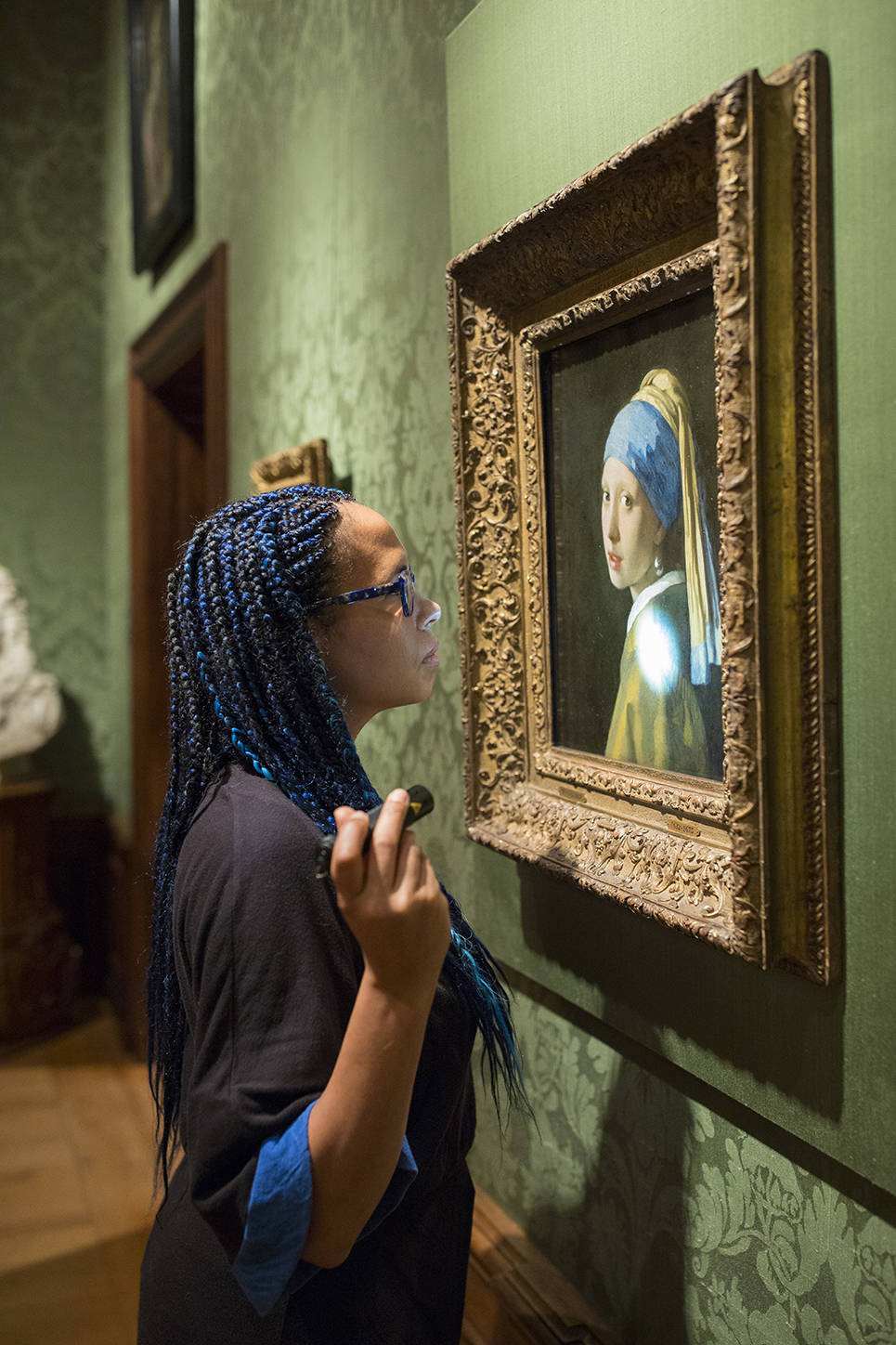The hammer falls at… 2 guilders and 30 cents
Although Vermeer painted The Girl around 1665, her first 200 years remain something of a mystery. In 1881, the painting was sold at the Notaries’ Auction House in The Hague. During the viewing, it caught the attention of two art experts, who were also friends and neighbours: Victor de Stuers and Arnoldus Andries des Tombe.
The painting was so dirty and in such poor condition that it was hard to see what it actually was. Despite the poor condition of the painting, De Stuers immediately recognised it as a Vermeer, but kindly agreed not to bid against his buddy Des Tombe at the auction. That meant that Des Tombe could buy it for the bargain basement price of two guilders…plus a 30 cent commission. In today’s money, that’s about 30 euros. After restoration, the signature ‘IVMeer’ was revealed, and it was recognised as a work by Johannes Vermeer.
After Des Tombe died in 1902, the Mauritshuis found out that he bequeathed twelve paintings to the museum, including The Girl. Dank u wel, Meneer des Tombe!
Two linings and two ‘Wild’ restorations
One thing is clear: The Girl was in a ‘deplorable state of neglect’ when Des Tombe bought it. In 1882, he took it to Van der Haeghen, a restorer in Antwerp, to have the painted lined. An additional piece of canvas was glued to the back of the original canvas to provide extra support.




